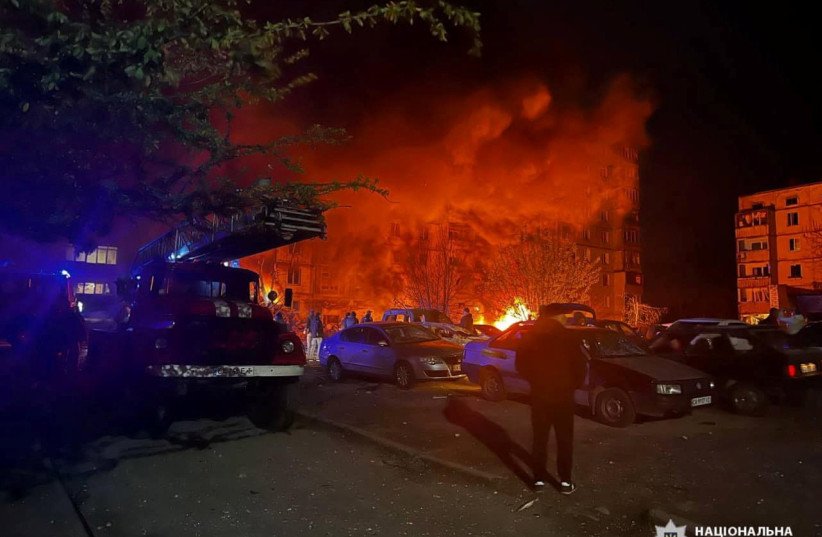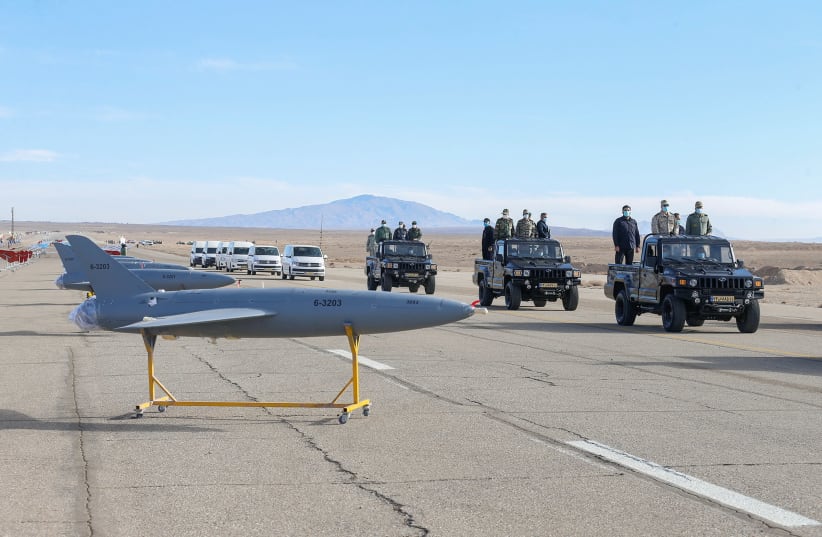Iranian drones have played a key role in Russia’s war on Ukraine. Recent attacks on Kyiv and Uman reveal once again the deadly nature of Russia’s war.
Russia uses weapons such as drones and missiles because they are relatively cheap and can spread terror far from the front line. And while Ukrainian air defenders have become more skilled at downing drones and missiles over the last year, these weapons continue to be used.
Iran’s drones are in the spotlight because they brazenly shipped them to Russia, coming under sanctions targeting its drone manufacture, development and transfer to Russia as a result. In addition, there is extensive focus on how the components for the drones are acquired.
A new report by Conflict Armament Research (CAR), a UK-based organization, examines the engines in Shahed 136 drones. These are the main kind of kamikaze drones that Iran has exported to Russia. Now the report reveals how Iran sought to reverse engineer engines for the drones. The original engines were acquired from Germany.
The report by CAR notes that “in December 2022 – just a few months after the Russian Federation began to use Iranian uncrewed aerial vehicles (UAVs) in the conflict in Ukraine – the European Union, United Kingdom, and the United States all announced sanctions against the Iran-based Oje Parvaz Mado Nafar Company (Mado).” It goes on to note that “the sanction listings state that Mado supplies engines for use in Iranian military UAVs, including the Shahed-series single-use UAVs used in Russian attacks against critical infrastructure in Ukraine.”


The original engines were acquired back in 2006 and this company was not founded until 2013. It appears the current company now produces the engines and has reverse-engineered them in some way. These engines and components have been found in a number of places, including an attack in the UAE in 2022 and on board a boat that was stopped in 2022.
The report concludes “despite efforts by the suppliers of the Iranian UAVs deployed in Ukraine to undermine the tracing of the chains of supply of foreign components used in the systems’ engines and to maintain an effective level of plausible deniability around the provenance of the engines, CAR’s field documentation proves that the engines detailed above are indeed manufactured by Mado.
"CAR continues to deploy field investigation teams to Ukraine to monitor for evolutions and changes in the weapons deployed by the Russian Federation in the conflict, and to support international sanction efforts.”
The role of MADO has been reported before
In October 2022 we noted in a previous report that Israeli President Isaac Herzog highlighted the Iranian drone threat at the Atlantic Council event in Washington this week, pointing to the engines of the drones in one slide and referencing a company called “Mado” as the engine maker. The engine used in the Iranian UAVs has been found in the wreckage of drone attacks in Ukraine, proving a link to Iran.
Adam Rawnsley, an expert in drones also noted in 2021 that the US “Treasury sanctioned the head of the IRGC drone unit who was responsible for the delta wing drone attack on the Mercer Street ship in the Gulf a few months ago.”
He wrote that Yousef Aboutaleni, the CEO of Mado, was hit by sanctions, that at the time the company had showcased its work in Damascus, an ally of Iran, and that Mado was proficient in copying Western products. “You can go through the list of Mado engine products and see the same thing. They’re clearly knocking off Western-model drone engines. The usual (but not exclusive) process was to take a Western model number and a Mado model prefix of MD or MDR.”
The engines are only a small part of the much larger story of Iran’s backing of Russia. CNN says that “the drone sales have deepened Iran’s relations with Russia, which were already strengthening as the two countries were increasingly locked out of international commerce and the financial system.”
The drones are one part of Russia’s ongoing war. Overnight from Thursday to Friday, Russia launched missile and drone strikes on Ukraine. Ukrainian air defenses destroyed at least two drones according to reports but the death toll in Uman is now believed to be at least 19 people.
And while it's not clear if drones were involved in that incident, the overall context is that drones play a role in terrorizing Ukrainian civilians.
